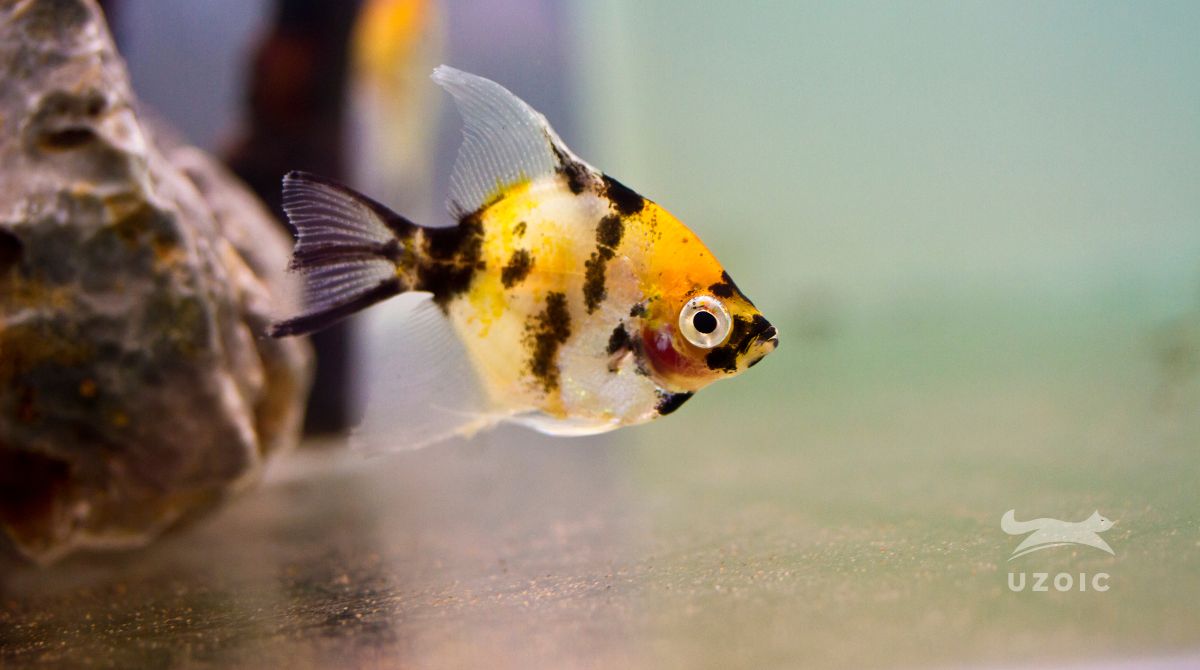Angelfish are popular freshwater aquarium fish known for their elegant appearance and graceful movements. However, like any other living organism, they can experience health issues from time to time. One common condition that angelfish may encounter is swollen lips, often referred to as Angelfish Lip Fibroma. In this guide, we will explore the causes, symptoms, and treatment options for treating an angelfish with swollen lips.
Causes of Angelfish Lip Fibroma: Angelfish Lip Fibroma is a condition characterized by the development of benign growths on the lips of angelfish. These growths are typically caused by a viral infection known as Lymphocystis disease. The virus responsible for this condition affects the fish’s skin and mucous membranes, leading to the development of raised, wart-like growths on various parts of the body, including the lips.
Symptoms of Angelfish Lip Fibroma: The most apparent symptom of Angelfish Lip Fibroma is the presence of swollen, protruding growths on the lips of the affected fish. These growths may vary in size and can be white, pink, or flesh-colored. In some cases, they may resemble cauliflower-like structures. Other symptoms to look out for include decreased appetite, reduced activity levels, and occasional scratching against objects in the aquarium.
Treatment Options: When dealing with Angelfish Lip Fibroma, it’s important to remember that there is no known cure for viral infections in fish. However, there are several treatment options available to manage the condition and alleviate discomfort for the affected angelfish.
- Isolation and Quarantine: The first step in treating an angelfish with swollen lips is to isolate and quarantine the affected fish. This prevents the spread of the viral infection to other fish in the aquarium. Set up a separate quarantine tank with appropriate water conditions and adequate filtration to provide a stress-free environment for the affected angelfish.
- Maintain Optimal Water Conditions: Maintaining optimal water conditions is crucial for the overall health and well-being of angelfish, especially those with viral infections. Ensure that the water parameters, such as temperature, pH, ammonia, and nitrate levels, are within the recommended range for angelfish. Clean and perform regular water changes to maintain good water quality.
- Boost Immune System: A strong immune system can help angelfish combat viral infections more effectively. Enhance the fish’s immune system by providing a well-balanced diet rich in vitamins, minerals, and essential nutrients. Offer high-quality fish foods, such as commercially available pellets or flakes, supplemented with occasional treats like frozen or live foods.
- Medication and Topical Treatments: While there is no cure for the viral infection causing Angelfish Lip Fibroma, certain medications and topical treatments can help manage the condition and alleviate symptoms. Consult with a veterinarian or experienced aquatic professional to obtain appropriate antiviral medications or treatments that can be applied directly to the affected area.
- Supportive Care: Providing supportive care to the affected angelfish is crucial for their recovery. Ensure that the quarantine tank is well-maintained and free from any potential stressors. Monitor the fish closely for any changes in behavior, appetite, or the appearance of the growths. Maintain a calm and stress-free environment to promote healing.
- Patience and Observation: It’s important to note that the healing process for Angelfish Lip Fibroma can be slow, and complete resolution of the growths may not always occur. It’s essential to be patient and closely monitor the angelfish’s progress. If the condition worsens or the fish’s health deteriorates, consult a veterinarian or aquatic specialist for further guidance.
Prevention is Key: Preventing viral infections, including Angelfish Lip Fibroma, is always better than treatment. To minimize the risk of such infections, it’s important to maintain a clean and well-maintained aquarium. Quarantine new fish before introducing them to an established tank and avoid overcrowding. Additionally, avoid introducing fish from unknown or unreliable sources.
In conclusion, Angelfish Lip Fibroma can be a challenging condition to treat, given that there is no known cure for viral infections in fish. However, with proper care, supportive measures, and a focus on maintaining optimal water conditions, the affected angelfish’s quality of life can be improved, and discomfort can be minimized. Always consult with a veterinarian or experienced aquatic professional for accurate diagnosis and guidance tailored to your specific situation.
Resources:
https://www.msdvetmanual.com/multimedia/image/lip-fibroma-angelfish
https://pubmed.ncbi.nlm.nih.gov/8440638/


